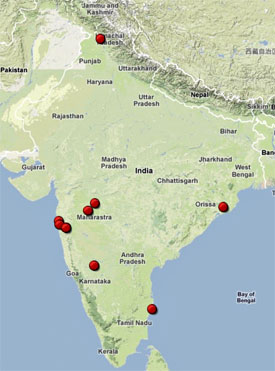World 🢖 Asia 🢖 India 🢖 Himachal Pradesh
Hindu shrines 🢔 Religious architecture 🢔 Architectural wonders 🢔 Categories of wonders
Wonder
Masroor Rock Cut Temples (Masrur Temples)
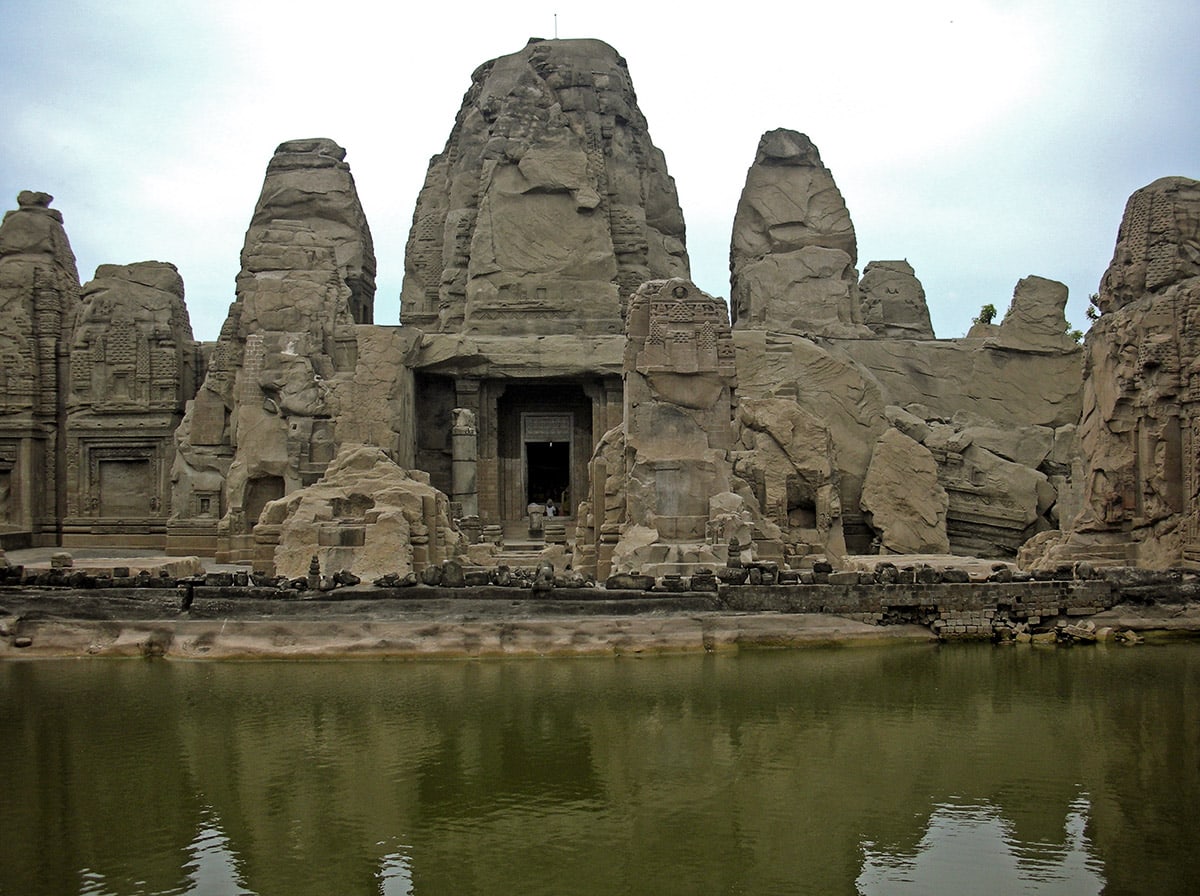
 In short
In short
Undeservedly little known wonder of Himalayas is an amazing temple complex – Masroor Temples. Surprisingly little is known about these unique structures, hewn more than 1,000 years ago in live rock.
 47.8%
47.8%
GPS coordinates
Location, address
Alternate names
Age
Religion
Map of the site
If you see this after your page is loaded completely, leafletJS files are missing.
 In detail
In detail
Himalayan pyramids
Sometimes in the 8th or 9th century – but most likely in the second half of the 8th century – one of the characteristic sandstone ridges in Kangri valley was reshaped in a miraculous way.
Unknown sculptors cleaved away the sandstone revealing 15 (earlier sources mention 19) steep-sided pyramids – sikharas, covered with intricate stone carvings.
Thanks to the favorable local topography – steep rock ridge – Masroor Temples rise above the surrounding landscape like ordinary structures. From the temple complex opens a fine view of Dhauladhar ranges and the Beas valley.
In the front of this group of pyramids was hewn almost 50 m long, rectangular water tank – gan. This is an important part of this architectonic complex, almost always filled with water and mirroring the amazing temple complex.
Pioneer of Nagara architecture style?
Such free-standing structures cut from live stone are rare in India (and in the whole world) and are unique in the Himalayas. The only two other comparable (but less impressive) examples of such type of rock-cut temples in the northern part of India are Dharmanath temple near Dhamnar in Rajasthan and Thal temple in Uttar Pradesh.
Art historians have identified that sculptures in the Masroor temples have been shaped in late Gupta style, most likely in the second half of the 8th century. There are no known inscriptions in the temple and no written accounts about this temple – thus it is rather a guess.
The design and planning of the temples represent an early (possibly – the earliest) example of Nagara style in architecture. This is a very important style in Hindu temple architecture, with characteristic beehive-formed towers.
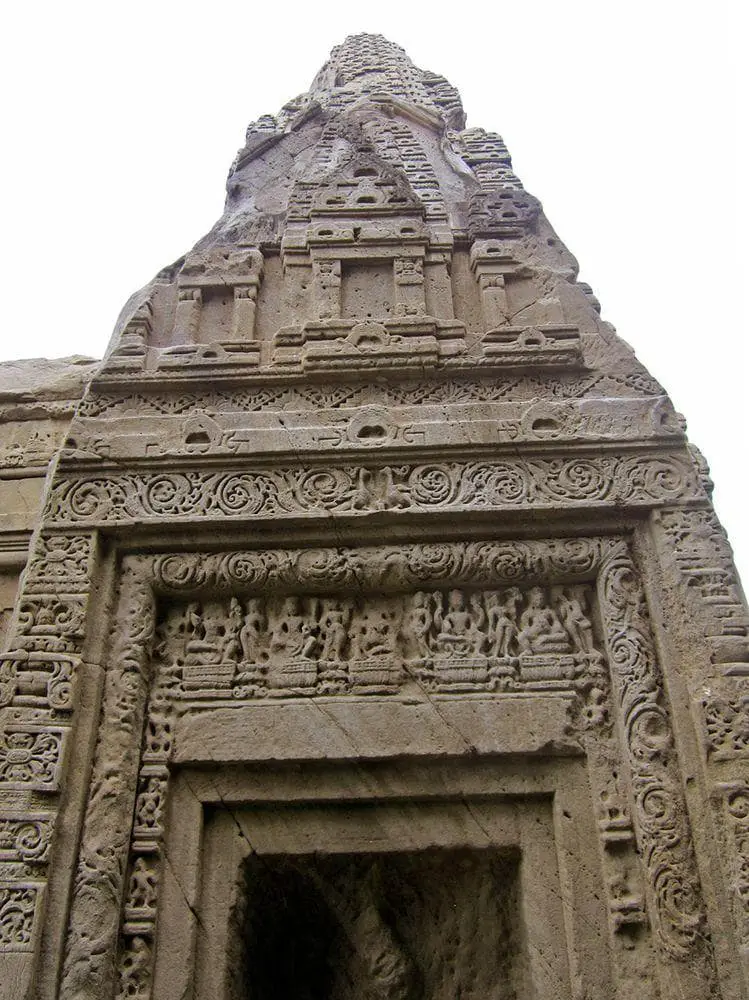
Shrine of Shiva and Rama
The 15 temples form a single group with a larger temple – Thakurdwara shrine – in the center. 14 temples are cut only from the outside, but Thakurdwara – also from the inside.
All temples are (or were) covered with intricate stone carvings of high quality but the most elaborate carvings adorn Thakurdwara.
The entrance in this central temple is facing east. The entrance part has four massive columns. Further entrance in the main shrine – garb-griha – leads through especially ornate stone door. Inside the shrine are black stone images of Lord Rama, Sita, and Laxmana. In the center, though stands a figure of Shiva.
Art historians consider that initially this temple was dedicated to Mahadeva (Shiva) and after an ancient earthquake was reshaped into a shrine of Rama.
European discovery of temples
Local people in Kangri Valley, of course, knew about these amazing structures but only in 1875 did Europeans learn about them as well. Few Europeans managed to visit this remote corner of India – only in 1913 H.L.Shuttleworth noted that these pyramidal temples are hewn out of live rock. The first more or less thorough description of these temples was published only 1915 by H. Hargreaves.
Destruction by nature
Kangra valley experienced an extremely powerful earthquake in 1905. Wonderful Masroor Temples suffered heavily and partly turned into ruins. Debris of the temples still lies around them.
Slower but not less destructive has been the erosion by weather and vegetation. Step by step the wonderful carvings have eroded, leaving a boring, flat surface.
Conservation and religion
Already in 1914 temples became a national monument and now it is considered to include them in the tentative list of UNESCO World Heritage sites.
Heritage institutions have done much to preserve and renew this amazing structure.
Unfortunately there is a divide between cultural heritage protection institutions and local people regarding access to the temple. Local people would love to use this amazing structure as intended – as a Hindu temple, but heritage institutions need to raise the cash and are charging the ticket price from everyone. Only two days per year – in the important festivities of Ram Navami and Janamashtmi – local people can access the temple for free.
Nowadays the temples can be reached by car but this area nevertheless is remote and rather little visited.
Masroor Rock Cut Temples are included in the following article:
 Linked articles
Linked articles

Wonders of India
India is the seventh-largest country in the world by area, and, naturally, such a large area contains a huge amount of exciting attractions…
Wondermondo considers that India is the second richest center of architectural heritage in the world after Europe and maybe no single country in the world can match it in this respect.
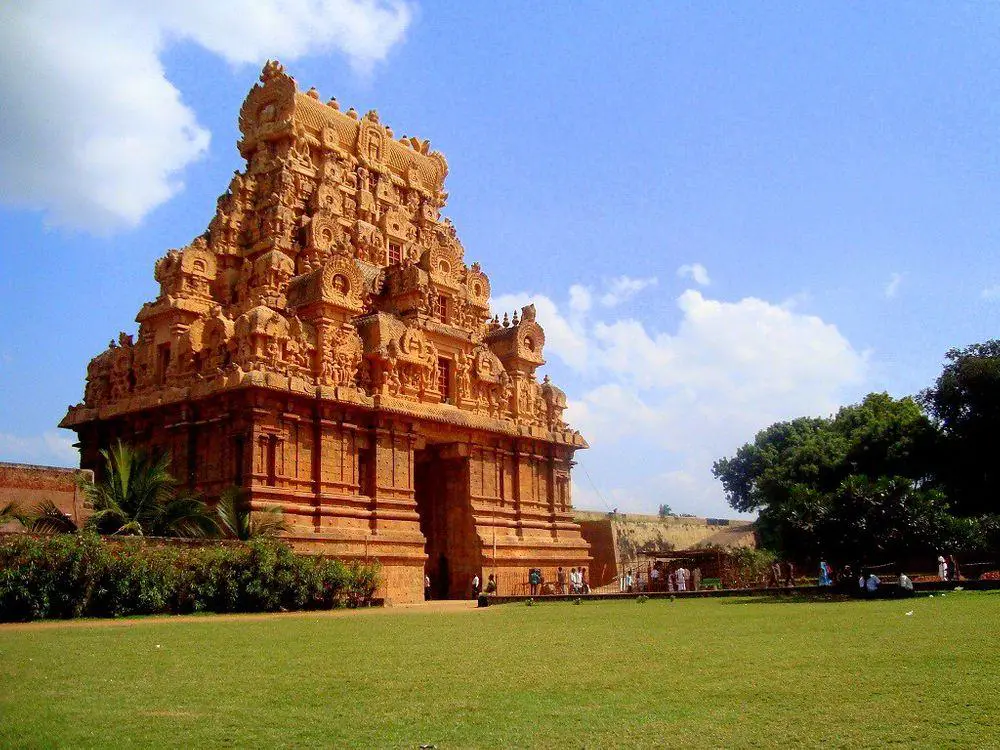
Hindu shrines
Hinduism is one of the oldest religions – possibly the oldest one among contemporary religions and Hindu temples belong to the most impressive religious buildings in the world.
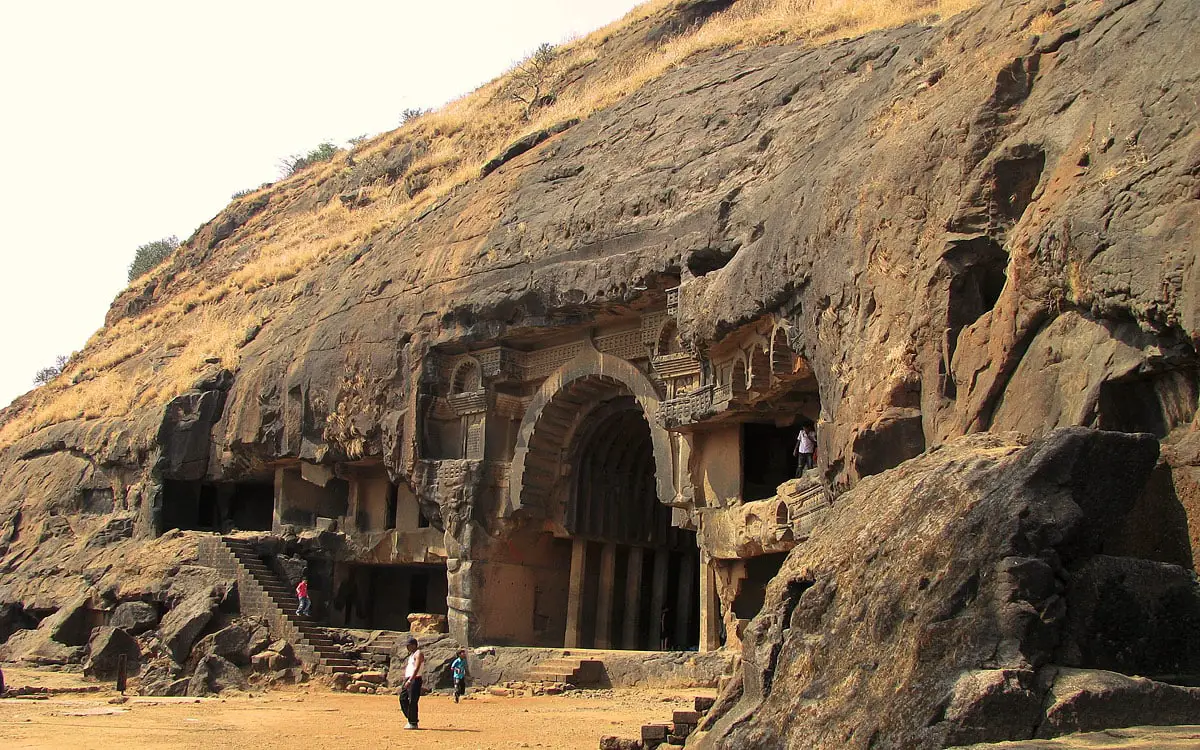
Rock-cut architecture and sculptures
Rock-cut architecture is a very ancient form of architecture – the oldest structures are more than 5 thousand years old. The resistivity of the natural stone and the constant climate inside these structures has preserved many art values around the world.
 Recommended books
Recommended books
Guide to Trekking in Himachal Pradesh
This book describes 75 treks spread all over Himachal. It has valuable information on planning and executing wilderness trips, mountain sickness, emergency survival tips, and other aspects of outdoor travel.
Antiquities of Himachal
This book attempts to acquaint the reader with little-known wooden and stone temples, sculptures in wood and stone, bronzes, etc.

